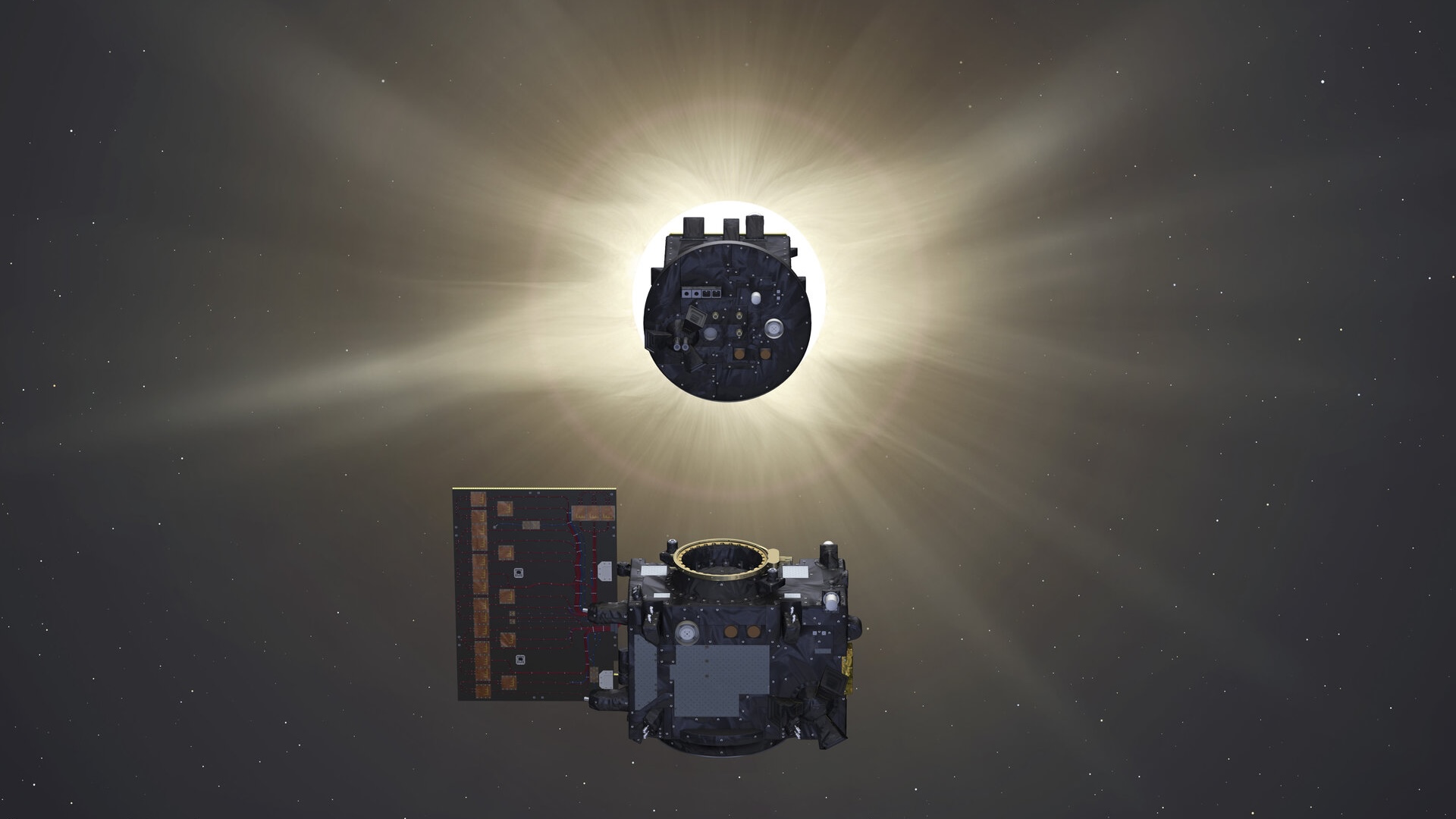Two European spacecraft perform dramatic world-first solar eclipse maneuver

In a world first, two spacecraft aligned into a formation in orbit with millimeter precision and maintained their relative position for hours without human intervention.
The European Space Agency's (ESA) Proba-3 mission performed the historic task using two spacecraft: The Coronagraph and the Occulter.
During the maneuver, the spacecraft flew 150 meters apart in perfect alignment. As its name implies, the Occulter blocked the Sun, casting a 5-cm shadow onto an optical instrument aboard the Coronagraph. This allowed the Coronograph to analyze the solar corona, which would otherwise be impossible to observe.
Proba-3's historic spacecraft alignment
The Coronograph and the Occulter essentially simulated a giant spacecraft when they flew in a precise formation for hours.
The Proba-3 team used positioning instruments to precisely align the two spacecraft while flying at an altitude above 50,000 km. Once that task was complete, the space vehicles were able to maintain their relative positions autonomously.
"Now, following more fine-tuning and testing, the team has achieved the desired precision, making Proba-3 the world's first-ever precision formation flying mission," an ESA post explained.
To stay aligned, the two spacecraft measured their relative position using the Visual Based System. This system is comprised of a wide-angle camera aboard the Occulter that tracks a number of flashing LED lights on the Coronagraph. Once the spacecraft were close enough together, a narrow-angle camera took over for more precise positioning.
However, reaching the extreme precision necessary for the mission required two final steps. Firstly, the Occulter fired a laser instrument called the Fine Lateral and Longitudinal Sensor (FLLS) at the Coronagraph's retroreflector. This beam was reflected back to the Occulter, allowing for millimetre-precise accuracy.
Secondly, a shadow position sensor utilized an onboard algorithm to measure light intensity around the coronagraph aperture. This data ensured the spacecraft would stay aligned within the shadow cast by the Occulter.
This combination of sensors and onboard software ensured that "the formation is stable beyond expectations", Esther Bastida Pertegaz, Proba-3 systems engineer, said in ESA's post.
Investigating the solar corona
Now that the Proba-3 team has achieved this world-first millimetric alignment of its spacecraft, they "can't wait to see the completion of the instrument calibration and the first processed image of the Sun's corona," Damien Galano, Proba-3 project manager, explained.
Studying the Sun's corona is incredibly challenging. The corona is hundreds of times dimmer than the Sun's surface, meaning scientists have to use specialized methods of observation. On Earth, scientists make the most of solar eclipses to observe the Sun's corona. For Proba-3, the two spacecraft essentially simulated this natural phenomenon.
The corona is the outermost layer of the Sun's atmosphere. Though it's much dimmer than the Sun's surface, the corona can reach temperatures of 3.6 million degrees Fahrenheit (two million degrees Celsius). The surface is roughly 500 times cooler.
Though this has posed a mystery for scientists, recent Nuclear Spectroscopic Telescope Array (NuSTAR) observations suggest the corona is hotter due to nanoflares . Studying the different regions of the Sun allows scientists to better understand solar flares, which are capable of vastly impacting our electronics-dependent society.

Post a Comment for "Two European spacecraft perform dramatic world-first solar eclipse maneuver"